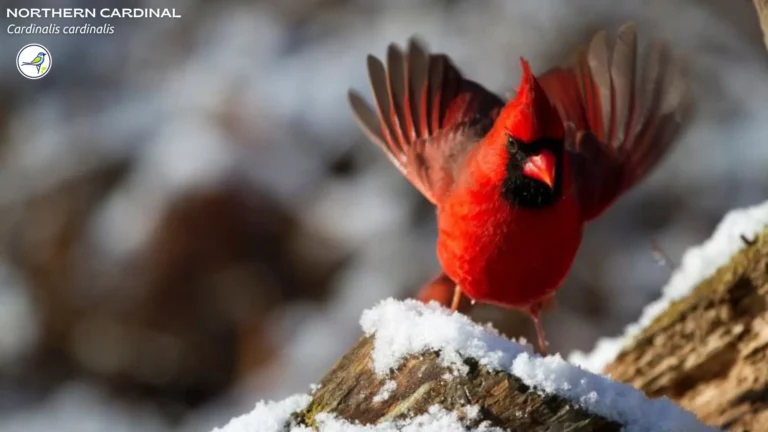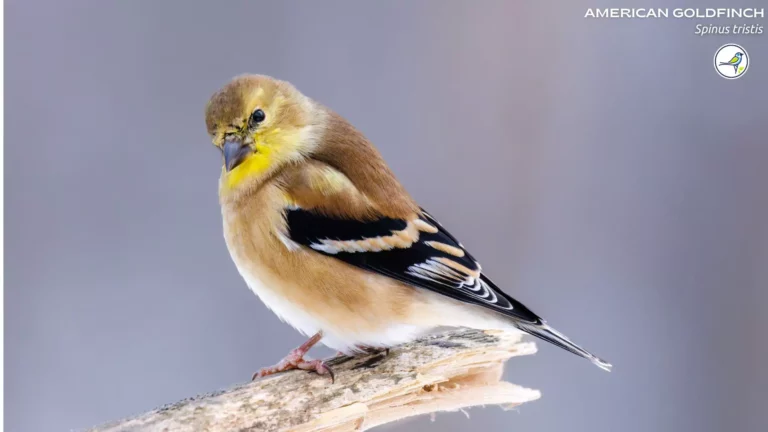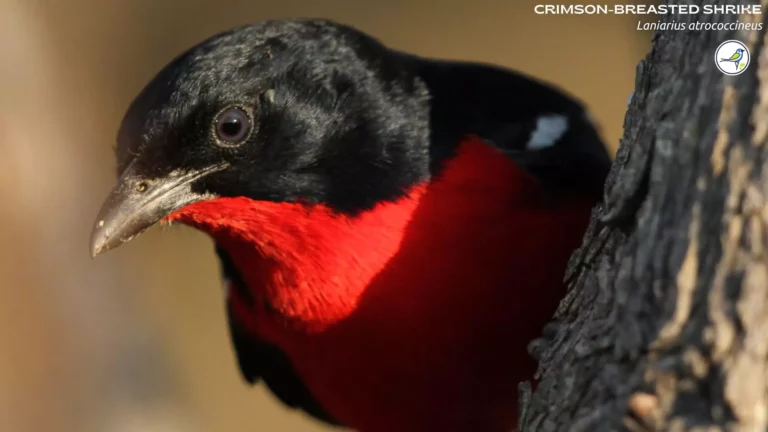Exploring Pennsylvania Bird Calls
Pennsylvania’s unique geographical location plays a pivotal role in its avian diversity. Nestled in the northeastern United States, it acts as a crucial migratory corridor, attracting a wide range of bird species. To the north, the Great Lakes beckon migratory birds, while the rugged terrain of the Appalachian Mountains provides a haven for various bird species. As a result, Pennsylvania’s birdwatching opportunities are second to none.
Pennsylvania’s geographical diversity includes everything from serene lakes and lush forests to rolling hills and fertile farmlands. This rich tapestry of environments offers birds an array of habitats, making the state an ideal residence or stopover point for countless species. From the warblers of Presque Isle to the raptors of Hawk Mountain, Pennsylvania’s ecosystems are home to a stunning array of feathered residents.
Throughout this blog post, we’ll delve into the heart of Pennsylvania’s birding world, exploring not only the distinctive calls of its avian inhabitants but also the techniques and tools you need to identify them. Whether you’re a seasoned birder or a curious beginner, you’ll gain insights into the world of Pennsylvania bird calls that will enhance your birdwatching experiences.
So, tighten your binoculars, sharpen your ears, and prepare to immerse yourself in the enchanting melodies of Pennsylvania’s feathered inhabitants. Let’s embark on a captivating journey through the fascinating world of Pennsylvania bird calls, where every note is a glimpse into the state’s vibrant avian tapestry.
Why Pennsylvania Is a Premier Destination for Birdwatching
Pennsylvania, often referred to as the “Keystone State,” stands as a premier destination for birdwatching enthusiasts. Nestled in the northeastern United States, this state is blessed with an abundance of natural beauty, diverse landscapes, and a unique blend of geographical features. These elements make Pennsylvania a hotspot for birdwatching, drawing enthusiasts from near and far. In this section, we’ll delve deeper into why Pennsylvania is the perfect backdrop for birdwatching adventures.
Pennsylvania’s Unique Geography: A Birdwatcher’s Dream
Pennsylvania’s geographical diversity is one of the primary reasons why it’s a birdwatcher’s paradise. The state is strategically positioned along major bird migration routes, making it a crucial stopover point for countless species. To the north, the Great Lakes beckon migratory birds, while to the south, the Appalachian Mountains provide a haven for a wide variety of bird species. This diverse terrain offers birdwatchers the opportunity to spot both resident and migratory birds throughout the year.
A Mosaic of Ecosystems: Variety in Abundance
Pennsylvania’s landscapes are nothing short of a mosaic of ecosystems. From the tranquil shores of Lake Erie to the dense forests of the Allegheny Plateau, the state offers an incredible range of habitats for birds. Each ecosystem supports a unique set of species, ensuring that every corner of Pennsylvania has something special to offer birdwatchers. Whether you’re interested in waterfowl, songbirds, raptors, or woodpeckers, Pennsylvania’s ecosystems have it all.
Seasonal Spectacles: Birding Year-Round
One of the most enticing aspects of birdwatching in Pennsylvania is the opportunity to witness the changing seasons’ impact on bird behavior. Spring and fall migrations are particularly spectacular, with birds en route to their breeding and wintering grounds making pit stops in the state. The arrival of warblers in spring and the raptor migrations at places like Hawk Mountain in the fall are must-see events for birdwatchers.
Community and Conservation: A Birdwatcher’s Network
Pennsylvania boasts a vibrant birdwatching community and a strong commitment to bird conservation. Numerous local birding clubs and organizations provide valuable resources, support, and opportunities for birdwatchers to connect and learn. Additionally, the state is actively engaged in bird conservation efforts, preserving critical habitats and working to protect endangered species.
The Importance of Pennsylvania Bird Calls: Unlocking Nature’s Soundtrack
The intricate and melodious world of Pennsylvania bird calls serves as nature’s soundtrack, weaving a tapestry of sounds that is both enchanting and essential. Understanding the importance of these calls not only enhances your birdwatching experience but also contributes to our knowledge of avian behavior and ecology. In this section, we will delve into the significance of Pennsylvania bird calls, exploring the various roles they play in the lives of our feathered friends.
Bird Calls: A Language of Survival and Communication
Bird calls are not mere melodies; they are a form of language among birds. These vocalizations serve various purposes in the avian world, including survival, communication, and reproduction. Birds use calls to establish territory boundaries, attract mates, warn of danger, and communicate with their young. By deciphering these calls, birdwatchers gain valuable insights into the lives of the birds they observe.
Identifying Birds by Their Calls: A Vital Skill
For birdwatchers, the ability to identify birds by their calls is a valuable skill. While spotting birds through binoculars is exciting, it is not always possible, especially when birds are hidden in dense foliage. Bird calls provide an auditory clue, helping birders locate and identify birds even when they are out of sight. Whether it’s the melodious song of a robin or the distinctive call of a red-tailed hawk, each sound is like a signature that guides birdwatchers in their quest.
Contribution to Citizen Science and Conservation
Pennsylvania birdwatchers actively contribute to citizen science and conservation efforts by documenting bird calls. By recording and reporting bird vocalizations, enthusiasts provide critical data to researchers and conservation organizations. This data helps track bird populations, monitor their health, and identify threats to their habitats. In essence, every bird call heard and documented is a contribution to the preservation of Pennsylvania’s avian treasures.
Enhancing the Birdwatching Experience
Understanding bird calls adds depth and richness to your birdwatching adventures. When you can identify the birds by their calls, you become more attuned to the environment, allowing you to appreciate the hidden life of birds that might otherwise go unnoticed. It’s like solving a musical puzzle that connects you to the natural world on a deeper level.
Common Pennsylvania Bird Species: Melodic Residents of the Keystone State
Pennsylvania is a birdwatcher’s paradise, home to a diverse array of avian species that grace its landscapes year-round. In this section, we’ll introduce you to some of the most common and captivating bird species that call the Keystone State their home. As you explore Pennsylvania’s bird calls, these feathered residents will become familiar companions on your birdwatching journeys.
Eastern Bluebird (Sialia sialis)
The Eastern Bluebird, with its striking blue plumage, is a beloved sight in Pennsylvania. Known for its sweet, melodious song, it often perches on fence posts and wires, making it a charming addition to rural landscapes. Look out for this iconic symbol of happiness and hope.

American Robin (Turdus migratorius)
The American Robin is a herald of spring in Pennsylvania, with its cheerful song signaling the arrival of warmer weather. Often seen hopping on lawns in search of earthworms, the robin’s red breast is a distinctive feature. Its song is a series of clear, melodious notes.

Northern Cardinal (Cardinalis cardinalis)
The Northern Cardinal, with its vibrant red plumage and distinctive crest, is a year-round resident of Pennsylvania. Its whistled song is both clear and memorable, making it a common visitor to backyards and gardens. Cardinals are known for their monogamous pairs, often seen together.

American Goldfinch (Spinus tristis)
In the summertime, the American Goldfinch dons bright yellow plumage, earning it the nickname “wild canary.” Its cheerful, undulating song adds a lively note to the Pennsylvania soundscape. Look for them feasting on sunflower seeds at bird feeders.

Red-tailed Hawk (Buteo jamaicensis)
The Red-tailed Hawk is a majestic raptor that can be spotted soaring gracefully over Pennsylvania’s open landscapes. Its distinctive, raspy scream is often associated with wide-open spaces and hunting territory. Keep an eye on the skies for these impressive birds of prey.

Wild Turkey (Meleagris gallopavo)
The Wild Turkey is a symbol of Pennsylvania’s wild places and is known for its gobbling call. These large birds are often seen in wooded areas and are an important part of the state’s wildlife heritage. Their calls are a reminder of Pennsylvania’s natural abundance.

House Sparrow (Passer domesticus)
The House Sparrow is a common sight in urban and suburban areas of Pennsylvania. While their chattering calls may seem ordinary, their adaptability and resilience make them a notable part of the state’s bird population.

Tufted Titmouse (Baeolophus bicolor)
The Tufted Titmouse is a small, energetic bird known for its bold demeanor and distinctive “peter-peter-peter” call. Often seen in wooded areas, these birds are charming additions to Pennsylvania’s forests.

Mourning Dove (Zenaida macroura)
The Mourning Dove’s soft, mournful cooing is a familiar sound in Pennsylvania’s suburbs and rural areas. These gentle birds are often associated with peace and serenity.

Carolina Wren (Thryothorus ludovicianus)
The Carolina Wren’s bubbling and cheerful song adds a delightful dimension to Pennsylvania’s bird calls. Despite their small size, their voices are strong and resonant, making them easy to identify.

Identifying Bird Calls: Techniques and Tips for Pennsylvania Birdwatchers
One of the most rewarding aspects of birdwatching is the ability to identify birds by their calls. In Pennsylvania, where a rich avian tapestry fills the air, honing your skills in recognizing these distinctive vocalizations can transform your birdwatching experience. In this section, we’ll delve into the techniques and tips that will help you become a proficient Pennsylvania bird call identifier.
1. Start with Familiarity: Begin by getting to know the calls of the most common bird species in Pennsylvania. Familiarize yourself with the songs of the Eastern Bluebird, American Robin, Northern Cardinal, and other local favorites. Listening to audio recordings and watching videos of these birds in action can aid your recognition.
2. Bird Field Guides and Apps: Invest in a good bird field guide specific to Pennsylvania or utilize bird identification apps tailored to the region. These resources provide detailed descriptions of each bird’s vocalizations, often accompanied by audio samples. Some apps even allow you to record and compare calls in real-time.
3. Mnemonics and Memory Aids: Create mnemonic devices or memory aids to remember bird calls. These can be simple phrases or sounds that mimic the bird’s call. For instance, the Northern Cardinal‘s song is often described as “cheer-cheer-cheer,” while the American Goldfinch’s call is likened to “potato-chip.” These associations make recall easier.
4. Pay Attention to Patterns: Bird calls often follow patterns or rhythms. Pay attention to the number of notes, the pauses between them, and the pitch. For example, the Carolina Wren’s song consists of several rapid notes followed by a pause, while the Mourning Dove’s cooing has a distinct, rhythmic pattern.
5. Field Experience: There’s no substitute for hands-on experience in the field. Spend time observing birds in their natural habitats and listen carefully to their calls. Try to associate what you hear with the birds you see. Over time, your ability to identify birds by their calls will improve significantly.
6. Record and Review: Carry a small recorder or use a birding app on your smartphone to record bird calls during your outings. Later, listen to these recordings and compare them to reference materials. This practice reinforces your learning and helps you recognize subtle variations.
7. Join Birdwatching Groups: Connect with local birdwatching groups or clubs in Pennsylvania. These communities often organize birdwatching outings and provide opportunities to learn from experienced birders. Birdwatchers are generally eager to share their knowledge and help newcomers refine their skills.
8. Be Patient and Persistent: Identifying bird calls can be challenging, especially for beginners. Be patient with yourself and keep practicing. It’s okay to make mistakes; learning bird calls is a gradual process that becomes more intuitive with time.
9. Explore Different Habitats: Different bird species prefer different habitats. Exploring a variety of ecosystems, from woodlands and wetlands to meadows and urban areas, exposes you to a broader range of bird calls. Each environment has its unique acoustic profile.
10. Use Technology Wisely: Take advantage of technology to enhance your bird call identification skills. Bird identification apps often come with features like spectrograms, which visually represent bird songs. These visual aids can complement your auditory learning.
Notable Birding Locations in Pennsylvania: Where to Find Avian Treasures
Pennsylvania’s diverse landscapes offer a multitude of birdwatching opportunities, each with its unique avian delights. In this section, we’ll explore some of the most notable birding locations across the Keystone State, guiding you to the best spots to observe and listen to the captivating bird calls of Pennsylvania.
1. Presque Isle State Park: Nestled on the shores of Lake Erie, Presque Isle State Park is a birdwatcher’s haven. This unique peninsula provides critical stopover habitat for migratory birds, especially during spring and fall migrations. From warblers and waterfowl to raptors, the park’s varied ecosystems offer a rich birding experience.
2. Hawk Mountain Sanctuary: Hawk Mountain Sanctuary, located along the Appalachian Flyway, is famous for its annual hawk migration spectacle. From September to November, thousands of raptors, including Bald Eagles and Peregrine Falcons, pass through this area. The calls and sights of these majestic birds are a treat for birdwatchers.
3. Middle Creek Wildlife Management Area: During the spring, Middle Creek becomes a staging area for thousands of Snow Geese and Tundra Swans on their northward journey. The sounds of these waterfowl, combined with the serene surroundings, create a memorable birdwatching experience.
4. Allegheny National Forest: The vast woodlands of the Allegheny National Forest are home to a wide range of bird species, including Wood Warblers, Pileated Woodpeckers, and Barred Owls. The forest’s tranquility and bird diversity make it an ideal destination for birdwatchers seeking a peaceful retreat.
5. Cherry Springs State Park: Known primarily for stargazing, Cherry Springs State Park also offers excellent birdwatching opportunities. Its remote location in the Pennsylvania Wilds provides a unique setting for observing forest birds and their calls, especially during the early morning hours.
6. John Heinz National Wildlife Refuge: Situated just outside of Philadelphia, the John Heinz National Wildlife Refuge offers a surprising oasis for urban birdwatchers. It features a variety of habitats, including freshwater marshes and tidal salt marshes, attracting a diverse range of waterfowl and songbirds.
7. Moraine State Park: Moraine State Park, with its expansive Lake Arthur, is a hub for waterfowl, including Common Loons, Canada Geese, and various duck species. The calls of these birds echo across the lake, creating a symphony of sounds.
8. Raccoon Creek State Park: Raccoon Creek State Park, in western Pennsylvania, boasts a mix of woodlands and wetlands. Birdwatchers here can expect to hear the calls of Red-winged Blackbirds, Song Sparrows, and many others in a tranquil natural setting.
9. Montour Preserve: Montour Preserve is home to both forest and wetland habitats, making it a great spot for birdwatching year-round. From spring migrants to wintering waterfowl, this preserve offers an ever-changing avian landscape.
10. Hawk Watch Sites: Throughout Pennsylvania, various hawk watch sites are strategically located to observe raptor migrations. These sites, including Waggoner’s Gap and Lehigh Gap, provide unparalleled opportunities to witness the calls and flights of hawks, eagles, and falcons.
Understanding the importance of Pennsylvania bird calls, identifying common species by their distinctive vocalizations, and knowing where to find these avian treasures are essential skills that elevate your birdwatching adventures. Whether you’re inspired by the cheerful songs of Eastern Bluebirds, the soaring majesty of Red-tailed Hawks, or the rhythmic cooing of Mourning Doves, each bird call adds a unique note to the Pennsylvania experience.
By honing your ability to recognize bird calls, you not only connect with the natural world on a deeper level but also contribute to bird conservation efforts and citizen science initiatives. Your observations and recordings become a vital part of preserving Pennsylvania’s avian heritage.
So, whether you’re a seasoned birder or a curious novice, let the melodious calls of Pennsylvania’s birds be your guide. As you embark on your birdwatching journey through this remarkable state, may each note remind you of the beauty and wonder that surrounds us in the natural world.







